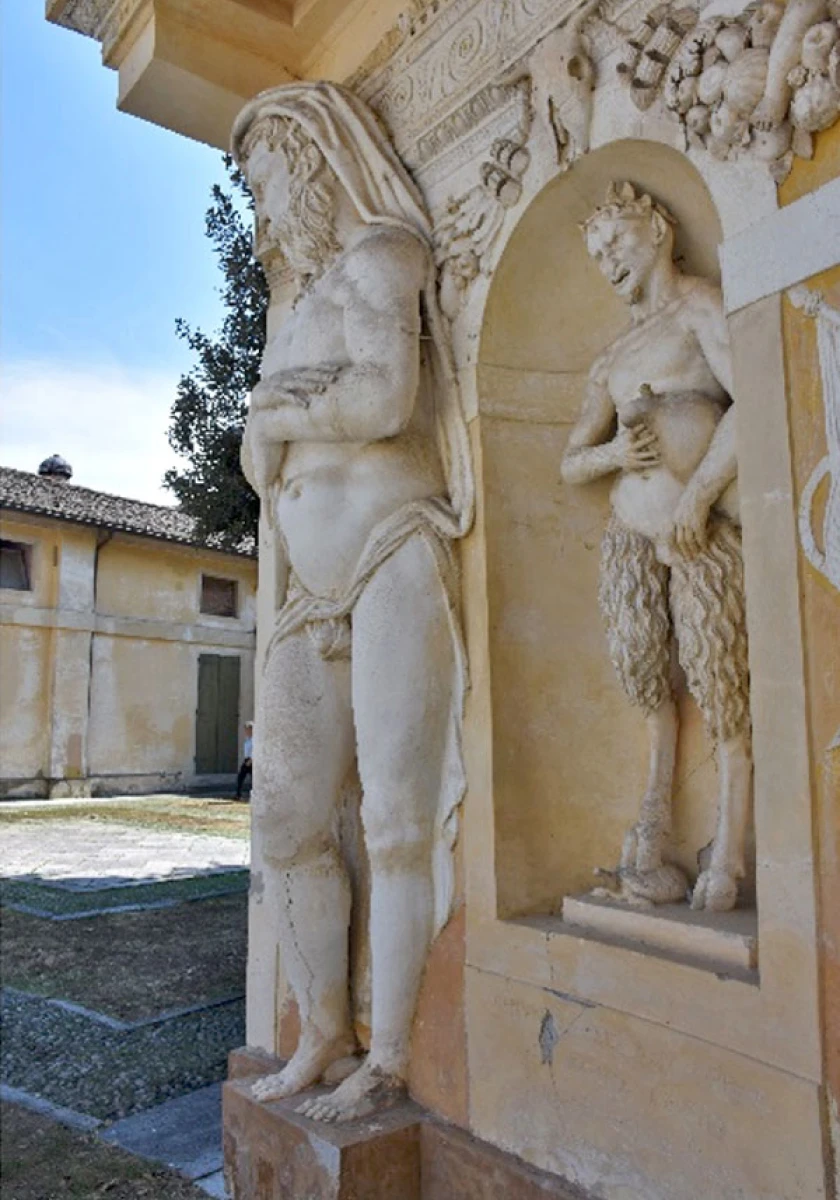The Nymphaeum

The compositional fulcrum of the hydraulic system that governs the villa’s water management is the nymphaeum.
The water collector, located downhill from the cistern, dominates the secret garden behind the villa with its sophisticated decorative design. This hydraulic structure serves a dual function: protection and distribution of water, both for household use and for irrigating the orchards and gardens.
The fountain, described by Palladio as adorned with countless stucco and painted ornaments in the context of the secret garden, today retains the configuration introduced by Tomaso Buzzi, who redesigned the paving, the shape of the basin, and, most notably, altered its appearance by choosing a largely monochromatic plaster finish in yellow tones.
The restoration, however, has made it possible to rediscover not only the intricate water features but also the polychromy of the decorations modeled by Vittoria, originally conceived against a gray blue background, evoking the theme of water.
The architecture of the nymphaeum has long been interpreted solely as a scenic backdrop to the villa, without fully grasping its taste, function, and significance particularly in terms of sustainable architecture.
Following the restoration, the nymphaeum once again governs the villa and park’s hydraulic system, allowing for a more rational use of water resources and control over water quality based on the needs of the garden.
The current water flow monitoring system is able to regulate the functioning of the water features, also evaluating their impact on the preservation state of the decorated surfaces.
Palladio poured all the wisdom of Venetian construction techniques into the architecture of the nymphaeum, particularly in terms of adaptability and flexibility of the masonry structure. Behind the theatrical invention lies a true barrier for water regulation, which protects and supplies the entire villa complex.
The lack of understanding of this part of the design’s true function has, over time, led to inappropriate interventions, both aesthetic and structural. In particular, certain works that caused the masonry structure to stiffen have compromised its intrinsic nature designed to adapt to the varying pressure exerted by the soil volume, which changes according to water levels.